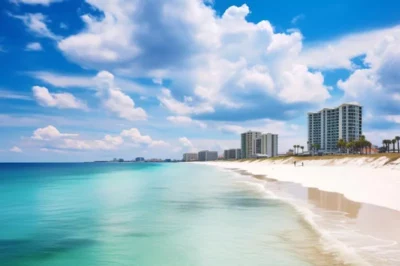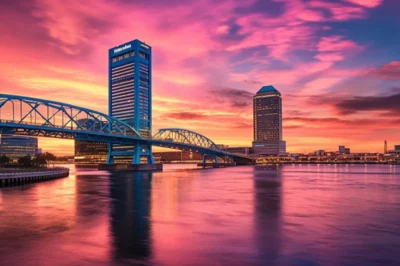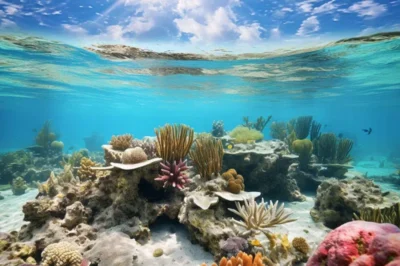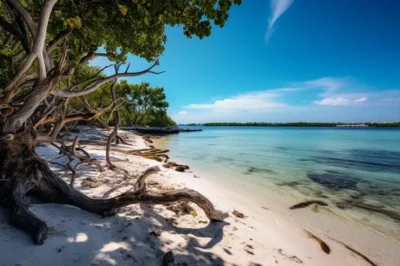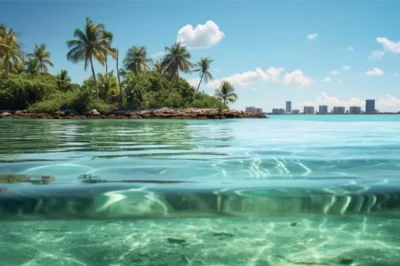Sargassum: The Giant Seaweed Blob Taking Over Florida’s Atlantic Shores
The beaches of Florida! A paradise known for its crystal-clear waters, golden sands, and the perfect backdrop for selfies. But lately, there’s a new, uninvited guest that’s crashing this idyllic setting: Sargassum seaweed.
This brown, sometimes stinky, mass is turning dream vacations into less-than-perfect experiences, and it’s time we talked about it.
What is Sargassum?
Sargassum is a type of marine algae that floats on the surface of the ocean. Originally native to the Sargasso Sea in the North Atlantic, it has now become a common sight on Florida’s beautiful beaches.

Unlike the stationary seaweed you might be used to, Sargassum is free-floating and often accumulates in large mats or “blooms.”
Why is Sargassum a Concern?
While Sargassum does have some environmental benefits, like providing a habitat for marine life, its sudden, excessive growth is causing problems. For starters, large Sargassum blooms can smother coral reefs and sea grass beds, depriving them of essential sunlight.
Onshore, its decay can produce hydrogen sulfide gas, causing a foul odor and potential health risks. Not to mention, its unsightly presence is a turn-off for tourists and a headache for local businesses relying on tourism dollars.
The Science Behind the Bloom
Okay, so we’ve established that Sargassum is a bit of a party crasher. But why is it showing up in such jaw-dropping amounts? Well, it’s not a simple answer. It’s a mix of climate change, shifting ocean currents, and nutrient-rich pollution finding its way into the sea.

Researchers have noticed that Sargassum blooms are more abundant during warmer seasons, and the ocean is definitely getting warmer year by year. Think of it as the ocean throwing a tantrum, and Sargassum is its way of acting out.
But let’s not beat around the seaweed bush; climate change is a key player. Rising sea temperatures are essentially like a power-up for Sargassum growth. Plus, with increased rainfall and land runoff, more nutrients like nitrogen and phosphorus are being dumped into the ocean, providing a buffet for Sargassum to feast on.
The Economic Angle
Now, let’s talk money. You might not feel it in your wallet, but the state of Florida certainly does. When beaches become less appealing due to a Sargassum invasion, it’s not just your Instagram feed that suffers; it’s also the local economy.

Tourism is Florida’s golden goose, contributing billions to the state’s economy each year.
But when Sargassum blooms make beaches less photogenic and more problematic, tourists might decide to take their business elsewhere. This could result in a loss of millions, if not billions, in tourism revenue.
Beyond the lost income, there’s also the price tag for cleaning up this mess. We’re talking about expensive machinery and manpower to remove the Sargassum from beaches.
Plus, disposal isn’t easy; you can’t just dump this stuff back into the ocean. Many communities are experimenting with composting methods or even converting Sargassum into biofuel, but these come with their own costs.
FAQs
What are the Benefits of Sargassum?
First and foremost, Sargassum isn’t just floating aimlessly; it’s actually a mobile home for various marine species.
It acts as a nursery for baby fish, offers a hiding spot from predators, and serves as a food source for others. For certain endangered species like sea turtles, it’s like a floating rest stop on their long oceanic journeys.
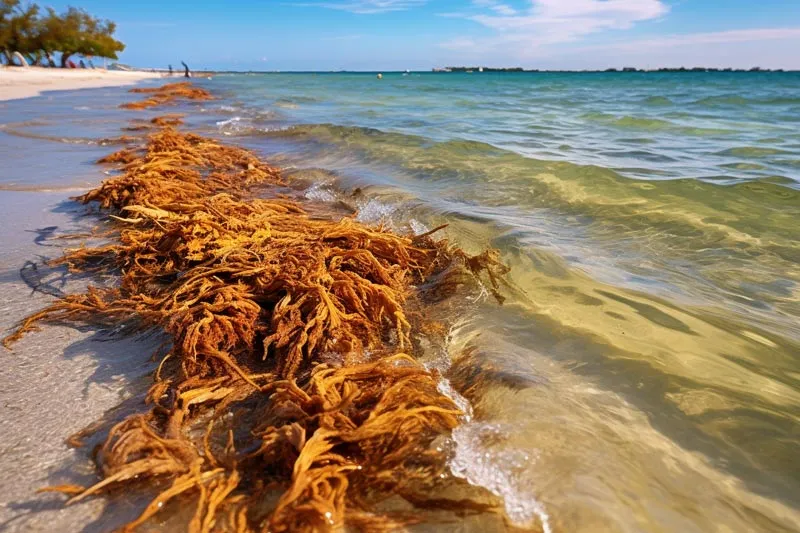
What Are Some of the Drawbacks of Sargassum?
So, it’s not all sunshine and rainbows. Excessive amounts of Sargassum can suffocate coral reefs by blocking sunlight, disrupt the activities of local fishermen, and clog important waterways.
The same characteristics that make it a good home for marine life can turn problematic in large amounts, disrupting the natural balance of marine ecosystems.
What Threats, If Any, Does Sargassum Pose to Human Health?
Let’s address the smell. When Sargassum starts decaying, it releases hydrogen sulfide gas, which smells like rotten eggs.
Aside from being an olfactory nightmare, long-term exposure to this gas in high concentrations can pose some health risks, such as irritation of the eyes, nose, or throat.
In addition, the decay process can also attract insects like sand flies, which could be a nuisance and, in some cases, a health hazard.
Furthermore, some people have reported skin irritations after direct contact with Sargassum or swimming in waters where it’s abundant.
Current Solutions
Alright, so we’ve covered the good, the bad, and the stinky of Sargassum. Now let’s shift gears and focus on what’s being done to tackle this seaweed snafu. After all, there’s no use crying over spilled… seaweed? Here are some of the measures being taken.
- Mechanical Removal: The most immediate and visually satisfying method is good old mechanical removal. Heavy machinery is brought in to literally scoop the Sargassum off the beaches. It’s a quick fix, but it’s also costly, labor-intensive, and can be harmful to the beach ecosystem.
- Natural Barriers: Some areas are experimenting with natural barriers like nets or booms placed offshore to prevent the seaweed from reaching the beach. It’s like putting a bouncer at the ocean’s door, but there’s still a lot to learn about the long-term effectiveness of this method.
- Conversion to Biofuel: Remember when we talked about how some folks are looking at Sargassum as more than just a nuisance? Well, researchers are investigating the possibility of converting this seaweed into biofuel. How’s that for turning lemons into lemonade—or in this case, seaweed into fuel?
- Community Initiatives: Local communities aren’t just sitting on their hands. They’re organizing beach cleanup events, involving both residents and tourists. It’s a way to tackle the problem while educating the public about the Sargassum issue.
- Scientific Research: Last but not least, researchers are doing their part by studying the life cycle of Sargassum and the factors contributing to its rapid growth. The better we understand it, the closer we are to finding a sustainable solution.
Conclusion
So there we have it. From providing a home for marine critters to becoming a massive eyesore and nose-sore for tourists, Sargassum is indeed a perplexing character.
But understanding it better is the first step in figuring out how to coexist with it—or better yet, how to manage it. As the keys to solving the problem lie in the intersection of science, economics, and community action, it’s a collective effort.
Don’t let this giant seaweed blob ruin your day at the beach. Instead, let’s turn this obstacle into an opportunity for innovation and environmental stewardship.



